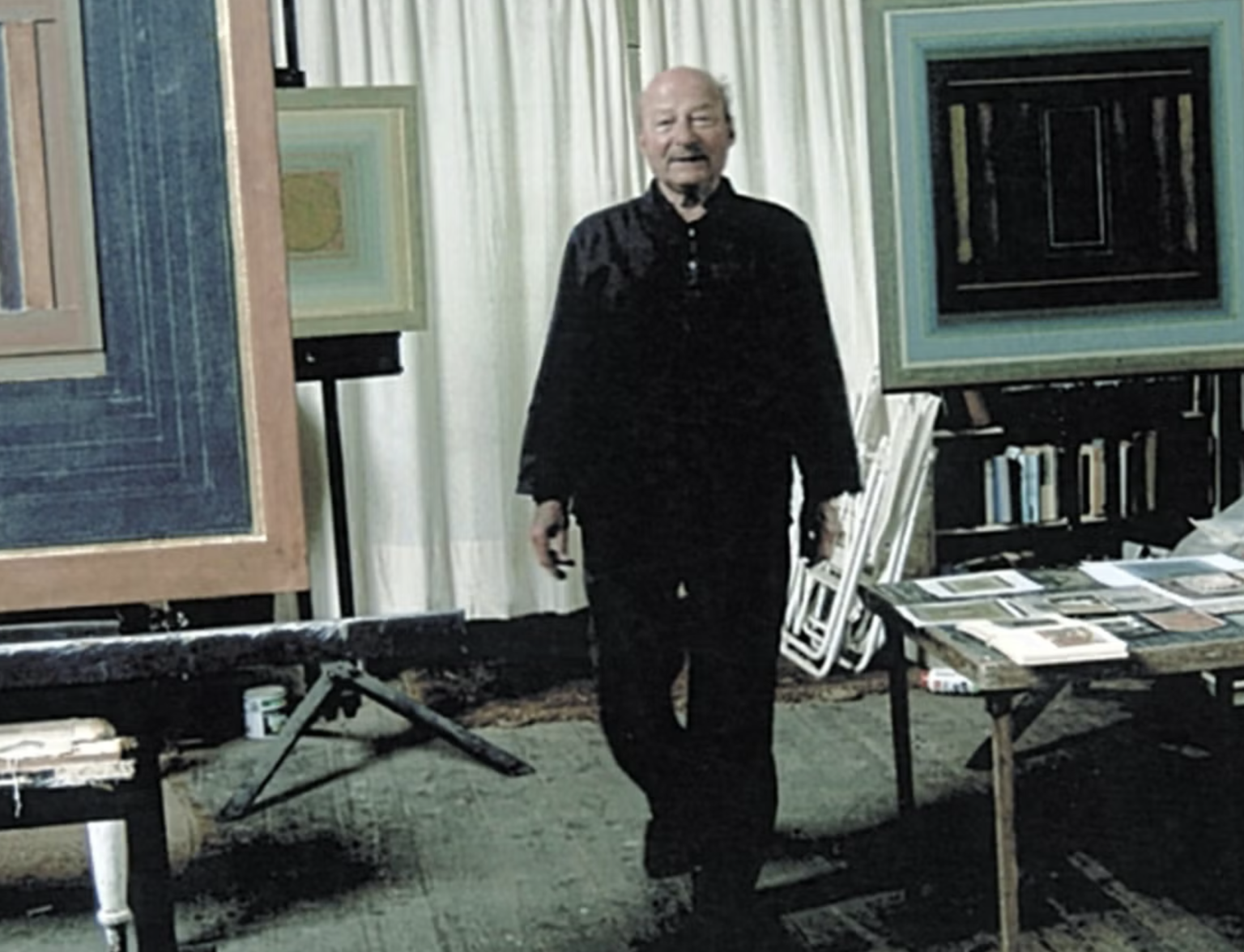Paul Feiler, born in 1918 in Frankfurt-am-Main, studied at the Slade School of Art from 1936 to 1940, after escaping Nazi Germany in 1933. His early life, including Alpine treks, visiting the Pergamon Museum, and a trip to Venice in 1947, deeply influenced him. At Slade, he chose art over a potential medical career and developed his own artistic path, despite the school’s traditional approach.
During World War II, Feiler was interned but continued his studies, receiving his diploma from the Slade in absentia. He began his teaching career at Eastbourne College in 1941 and then at the West of England College of Art in 1946. He also held exhibitions at the Redfern, the Leicester Galleries, and the Royal Academy. In 1945, he married June Miles and later moved to Bristol.
Feiler’s visit to Cornwall in 1949 inspired his minimalist, abstract landscapes. Here, he reconnected with old classmates like Patrick Heron and Bryan Wynter and met artists like William Scott and Peter Lanyon. His Redfern Gallery solo show in 1953 and a trip to Italy bolstered his career, leading to his move to Kerris, near Penzance. Feiler’s work, known for its thick textures, was frequently exhibited alongside Wynter, Lanyon, and Scott at St. Ives summer school, founded by Terry Frost, who became a close friend.
Feiler’s style evolved significantly in the late 1960s, influenced by the moon landings. He started creating simplified compositions with circles and vertical bars, reminiscent of Malevich’s Supremacist studies. In 1969, he began his ‘shrine paintings’ series, focusing on concentric squares with central circles, drawing inspiration from ancient architecture. These works, while flatly painted, still echoed his Cornish landscapes.
John Steer’s endorsement led to a solo exhibition organized by the Scottish Arts Council, touring England and Germany from 1980 to 1981. Between 1995 and 1997, Feiler worked on his dark, intense ‘Janus’ series, followed by the brighter ‘Janicon’ series. His 2005 Tate St. Ives exhibition, ‘The Near and The Far’, juxtaposed his recent works with those from the Tate’s collection, including Cézanne, Malevich, and Turner.
Feiler continued to innovate until his death in 2013, creating ‘Square Reliefs’ that combined painted and Perspex elements within a Perspex frame, marking a new direction in his artistic journey.

